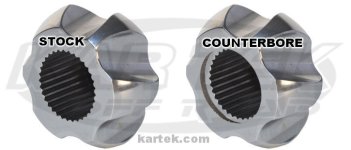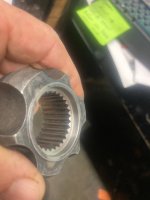- Thread starter
- #21
BONES
Well-known member
- May 5, 2021
- 526
- 522
What Johnny said ^^^They are a little louder when I am turning at low speeds.
This is what is funny to me, I notice them clicking most when just barely puttering while leaving camp or going slow with low throttle. My motor is so loud I probably don’t notice them if I’m romping on it, but I don’t have enough body roll when going 3mph and turning. They increase in sound the sharper the turn, from non existent while going straight, to loud with the wheel turned all the way.
no. And I feel like you’re mad at me because I haven’t…For argument sake have you ever worked on a car where at full droop the axle bind while turning the wheel? Specifically six times in one rotation?
just asking yes or no? Have you ever been on a dyno and seen the axle have a cyclical back and forth? Specifically a frequency of 6 times a revelation ?
Tried what you suggested. They are quiet. I was kinda hoping they made noise so maybe it would narrow it down.My experience is if they are making noise you will soon have a problem. I second the limit strap question. Jack up the back end off the ground and rotate the drive wheels. If the are clicking try a shorter strap.
So what would you suggest? I follow your IG and have seen that you do a lot of these. Does anybody come back to you and say they are still clicking even after you change out a set? If so, what remedies it?Indexing CVs, aka clocking. It is myth and serives no purpose other than fodder for this website. I prep 20 sets of CVs a year and have never clocked/indexed and set.




